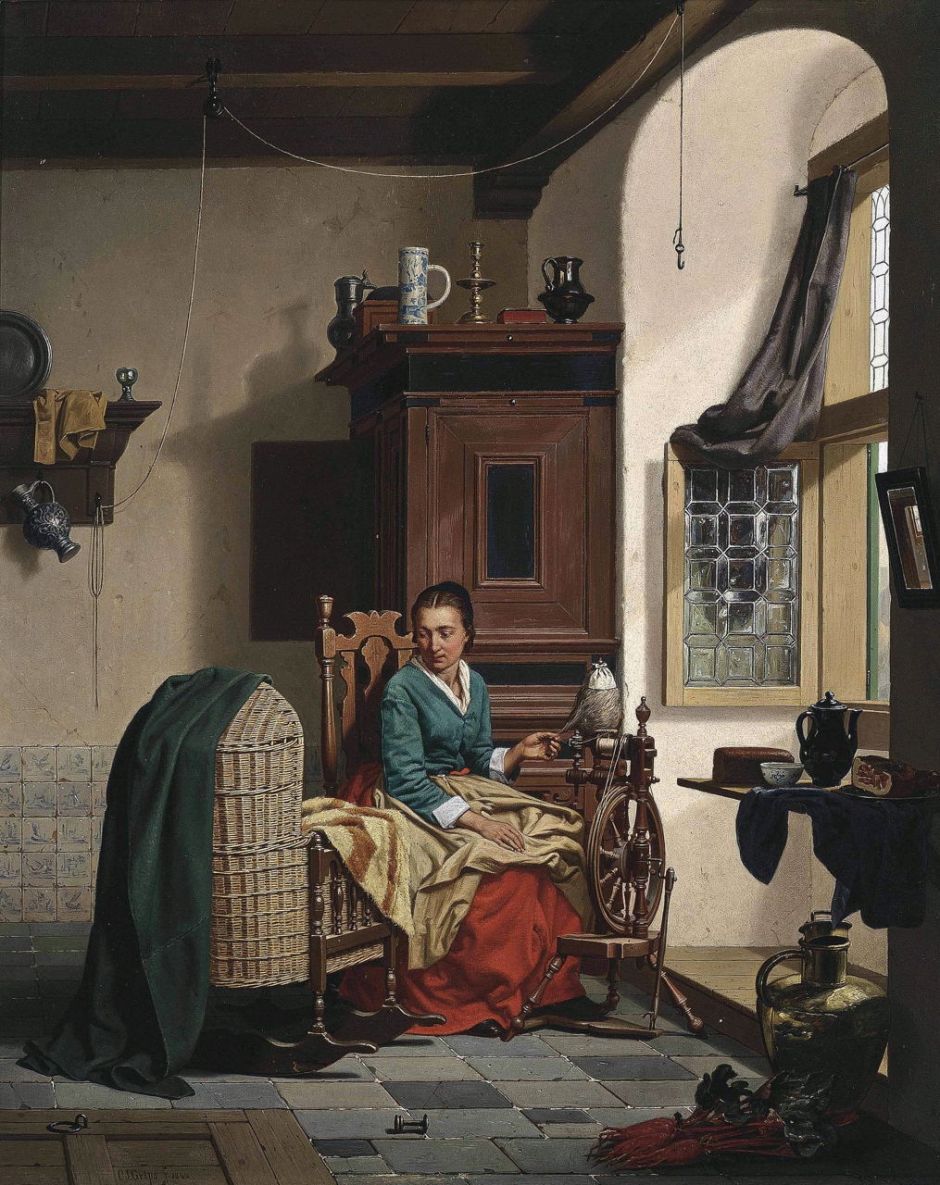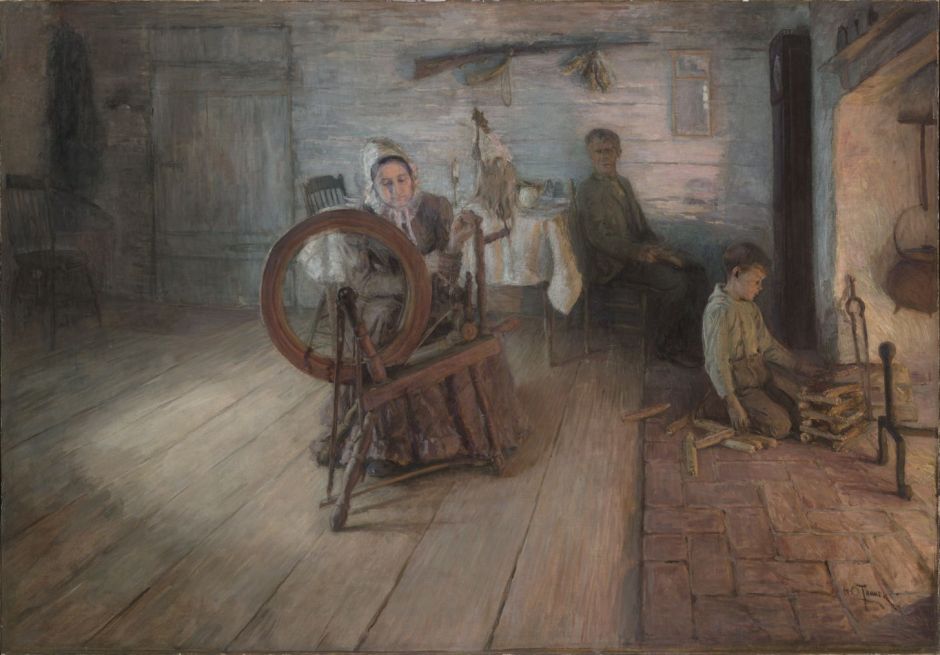In the absence of refractive error in the eyes such as myopia, human vision normally forms images that are sharp in focus. There is, though, one everyday situation in which blurring is normal perception, when it’s the result of motion. Rotating spoked wheels are a longstanding stimulus resulting in perceived motion blur. This article traces the depiction of the best example of this in European painting: the spinning wheel used to turn fibres into yarn.
Because of their rotation, spinning wheels aren’t amenable to other techniques for giving the impression of motion, such as position, posture and billowing fabric.

When running, we lean forward, and although both feet do leave the ground simultaneously, the painter has to study human motion carefully to ensure that what they paint appears realistic and not false. Artists like Guido Reni would have looked carefully at people running before painting Hippomenes and Atalanta so effectively. Here he uses another popular device to imply motion: strips of flying fabric, which we know trail behind a moving body and render its slipstream visible. Such strips are also used to indicate relative motion of the air, so our brains have to determine whether it is the body which is moving through static air, or air which is moving past a static body. Given the other signs of motion, that is easily resolved.
Spinning wheels are different.

Whatever reading you like to make of Velázquez’s Las Hilanderas or The Spinners, one of its striking features is the motion blur of the spinning wheel in the foreground.

A closer look reveals the detail in Velázquez’s painting, which was clearly the result of close observation of the blurred image the artist perceived. There are hints of radial spokes, and concentric circles suggesting the structure of the hub and its rim in rapid motion. Other parts that would have been in motion, such as the wheel’s support, are also carefully blurred, as is the yarn.

Other paintings, such as Charles Joseph Grips’s Spinner’s Favorite from 1866, fail to show any motion blur, although in this case the spinner’s foot is on the treadle and her left hand feeding the fibres from the distaff. Although this was painted well after the introduction of photography, at this stage of its development exposures were still too long for the artist to have been influenced by photographs.

A decade later, Thomas Eakins painted spinning wheels in full flight, with faithful depictions of their blur. Although Eakins is known to have used photographs in his paintings, there’s nothing to suggest that they contributed anything to In Grandmother’s Time from 1876, above, or The Courtship from about 1878, below. In both works he blurs out the spokes and makes the spinning wheel appear transparent, to give the impression of its motion.


I haven’t been able to find a date for Léon Augustin Lhermitte’s The Spinner, but suspect that it was painted a decade or so later than Eakins’ two paintings. Here motion blur includes much of the wheel as well, as in Velázquez’s Las Hilanderas, and the flyer and bobbin winding the yarn at the left.

Henry Ossawa Tanner’s Spinning By Firelight – The Boyhood of George Washington Gray, from 1894, is similarly faithful to human visual perception.

Long after the widespread use of brief photographic exposures to freeze motion, Firmin Baes painted The Old Spinner in 1943. Although a superb work in pastels, its depiction of the spinning wheel is inconsistent. The spokes of the wheel as not only distinct but quite sharp, although the yarn and bobbin are more blurred, and the spinner (on the bobbin) is so blurred that it’s barely visible.
Spinning wheels are by no means the only objects seen in motion in paintings. Other examples include the sails on windmills, for which Claude Monet provides a fine depiction.

In his Tulip Field in Holland (1886) Monet has blurred the sails of the windmill to give the impression of their motion.

